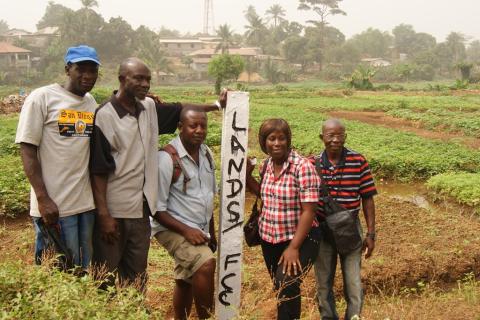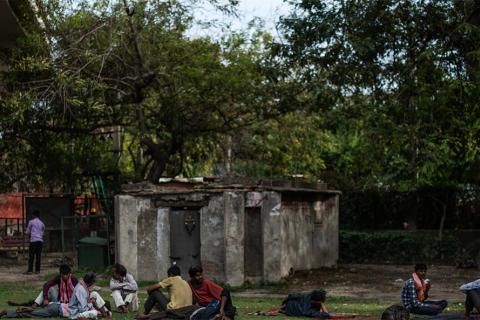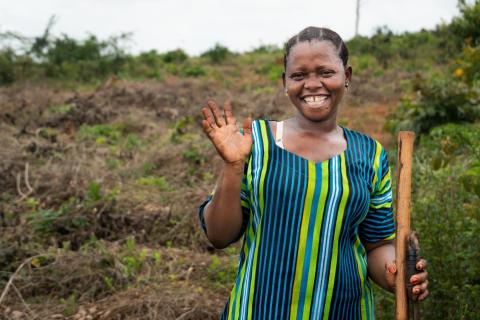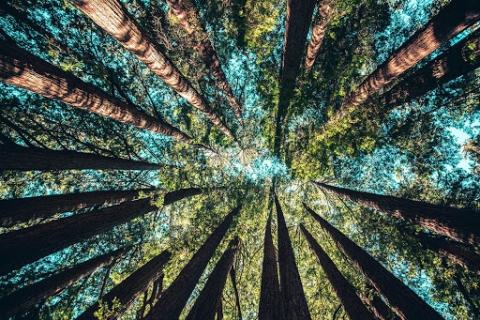Whether from the emergence of infectious diseases, the growing risks to global food systems, or from the increasing variability in global climate and local weather patterns, it is evident that we urgently need to rebalance our relationship with nature. Our relationship with forests is a prime example.
Forests are among the most biodiverse of Earth’s ecosystems. They sequester carbon and help to mitigate against climate change. They protect watersheds and help to control soil erosion. And yet, around 11% of carbon dioxide emissions come from deforestation and forest degradation, which is second only to the energy sector.
The 21st of March was the International Day of Forests, and it convened under the theme of forests and biodiversity. This is fitting in 2020, the beginning of a critical decade for the planet. There will be landmark moments early in the decade, including the anticipated adoption of a new post-2020 global biodiversity framework.
The United Nations Environment Programme World Conservation Monitoring Centre (UNEP-WCMC) is a Centre of global excellence in biodiversity. Over the past 10 years, we have been closely involved with REDD+, an initiative under the climate change convention (UNFCCC) that aims to support developing countries to reduce emissions from deforestation and forest degradation, and to promote the conservation, sustainable management and restoration of forests. Working closely with the UN-REDD Programme, we help countries to plan for and access results-based payments for these actions.
In work led by UNEP-WCMC, the UN-REDD Programme has supported over 20 developing countries to analyze where REDD+ actions could result in multiple benefits beyond carbon. Through spatial analyses carried out in close collaboration with national partners, countries have been empowered to identify areas that have potential for forest conservation, restoration and sustainable management, and can also help secure a range of additional important benefits for people and planet.
These analyses have shown how sustainable forest practices across the planet can contribute to a wide range of the Sustainable Development Goals.
One such example is Costa Rica. The National REDD+ Secretariat, together with FONAFIFO (the country’s National Forestry Financing Fund) and the UN-REDD Programme used spatial analyses to explore where REDD+ actions could help secure benefits beyond carbon, such as enhanced water regulation to support communities vulnerable to water stress, the potential for socio-economic improvements from forest-dependent livelihoods, and from ecotourism.
The work emphasized areas of overlap between the National REDD+ Strategy and spatial priorities for Costa Rica’s other objectives, such as national development, restoration and biodiversity conservation. Considering these benefits when planning and implementing REDD+ will help progress towards SDGs 1 (No Poverty); 6 (Clean Water and Sanitation); 13 (Climate Action); and 15 (Life on Land), among others.
More recently, this work also featured in the development of Costa Rica’s Gender Action Plan (contributing to SDG 5 on Gender Equality). Spatial layers showing the proportion of women by district contributed additional insight and helped to highlight districts where women could act as conservation agents, support efforts to reduce forest fires, and undertake reforestation activities.
Another example is Côte d’Ivoire, where we collaborated with the country’s REDD+ Permanent Executive Secretariat and the Swiss Scientific Research Centre to develop a forest restoration opportunities map. This combined potential benefits, such as carbon density, soil erosion risk and species richness, with obstacles to forest restoration, such as infrastructure development and high human land use. The resulting map shows areas with higher potential and lower obstacles, and thus where forest restoration could be most effective and have the most positive impacts. This could include contributing to SDGs such as SDG 6 (Clean Water and Sanitation), 13 (Climate Action), and 15 (Life on Land).
This type of analysis can identify where agroforestry actions are feasible to guide implementation of Côte d’Ivoire’s National REDD+ Strategy, promoting the use of agroforestry to strengthen agricultural systems’ resilience to climate change, and to diversify incomes for farmers. There is also an opportunity to align REDD+ and private sector cocoa initiatives, with the potential to create more incentives for smallholder farmers and contribute to SDG 12 (Responsible Consumption and Production), among others.
Meanwhile in Viet Nam, lessons from the National REDD+ Programme are informing the development of a deforestation-free jurisdiction in the Central Highlands. This region is at the forefront of efforts to conserve natural forests and other biodiversity, while sustaining production of high-value crops like coffee. Both nationally and locally, partners are seeking to promote sustainable land management and pilot a deforestation-free approach in the region in support of SDGs 13 (Climate Action) and 15 (Life on Land).
These individual examples give us just a snapshot of how retaining, restoring and sustainably managing our forests can help achieve a wide variety of SDGs and bring a range of benefits for people and for nature. As this year’s International Day of Forests slogan put it, our forests are too precious to lose.
More information is available here.












